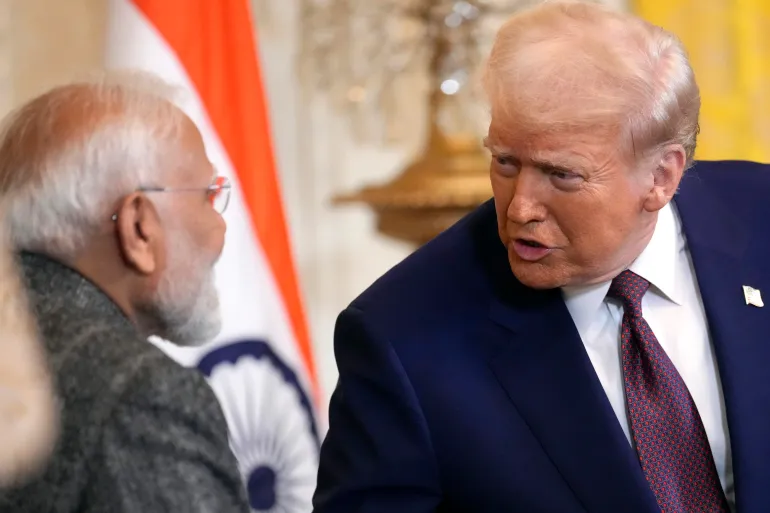In a stunning turn of events, U.S.-India relations have hit their lowest point in years, as President Donald Trump’s administration announced a steep 50% tariff on Indian goods—marking the highest rate imposed on any country so far. For many watching the unfolding drama, the message is clear: Trump is prioritizing American manufacturing—or “onshoring”—over alliances, even with long-standing friends like India.
This sudden hike includes an additional 25% tariff in response to India’s continued import of Russian oil. While the timing shocked many, the signs of strain have been there. Just last week, Trump publicly chastised India for its military and energy ties with Russia, labeling both nations “dead economies.” The comment stung, especially given the public camaraderie Trump and Indian Prime Minister Narendra Modi have often displayed.
“This is arguably the worst moment in U.S.-India relations in decades,” said Vina Nadjibulla of the Asia Pacific Foundation of Canada. “India now finds itself isolated, with the highest tariff burden and no trade deal in sight. Rebuilding trust will be a difficult but necessary journey.”
The consequences extend beyond diplomacy. Last year, bilateral trade reached $212 billion, with India enjoying a $46 billion surplus. Modi had hoped to more than double that to $500 billion within five years. As part of the now-stalled negotiations, India had made several concessions—agreeing to lower duties on U.S. industrial goods and even cars. However, it refused to cut tariffs on politically sensitive agricultural and dairy products that support hundreds of millions of Indians.
According to Farwa Aamer of the Asia Society Policy Institute, the dispute isn’t just about trade. Recent geopolitical tensions—such as conflicting narratives over U.S. involvement in easing India-Pakistan tensions—have also played a part. Pakistan’s decision to nominate Trump for a Nobel Peace Prize for his supposed mediation only added to India’s discomfort.
In New Delhi, officials called the tariff “unfair, unjustified, and unreasonable,” underscoring that Russian oil imports are critical for meeting the energy demands of its 1.4 billion citizens. Still, India is not backing down.
“India doesn’t want to look weak,” said Aamer. “With Modi’s rising global stature, the country must project strength and independence. Foreign policy, especially under Modi, is deeply rooted in national interest.”
Robert Rogowsky, a trade expert, foresees “creative diplomacy” in the near future, suggesting this may not be the final chapter. Yet the uncertainty is already sending ripples through business and investment circles.
India had recently gained momentum as a global manufacturing hub. Apple, for instance, plans to assemble all iPhones for the U.S. market in India by next year. But such ambitions now hang in the balance. “This tariff adds to the instability businesses were already grappling with,” Nadjibulla warned.
Despite these setbacks, India is moving forward. It has recently signed trade deals with the UK and is in talks with the EU. Modi also plans to attend the Shanghai Cooperation Organisation summit in China, signaling a cautious openness to regional dialogue—even with past rivals.
The real question now is whether the U.S. and India can weather this storm. Their partnership has been viewed as critical in a changing global order. Whether diplomacy can rebuild the bridge—or whether this marks a long-term fracture—remains to be seen.








